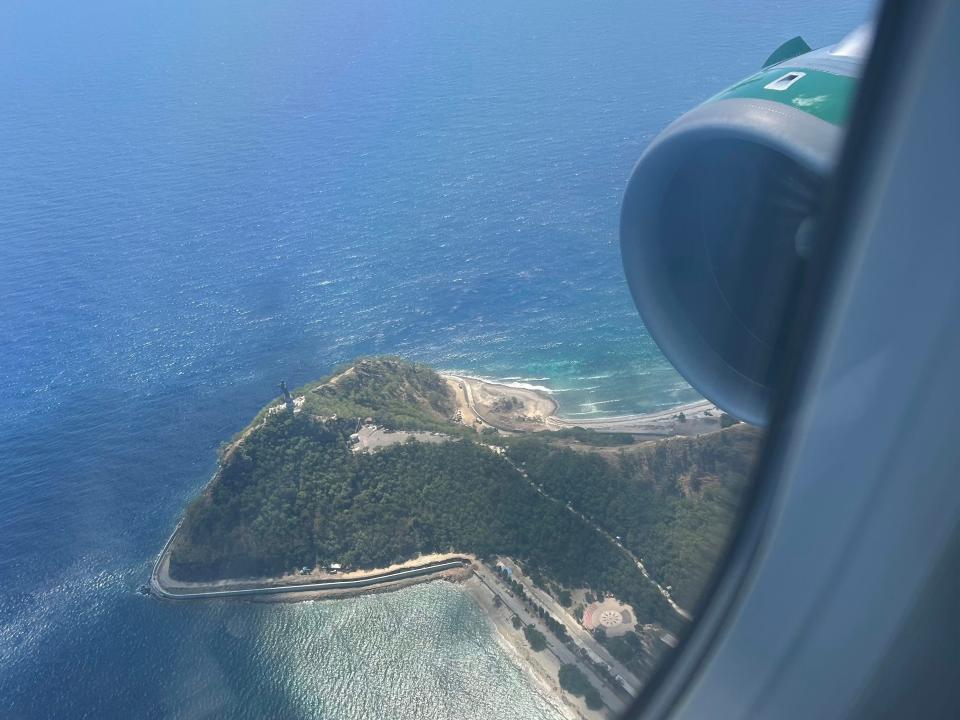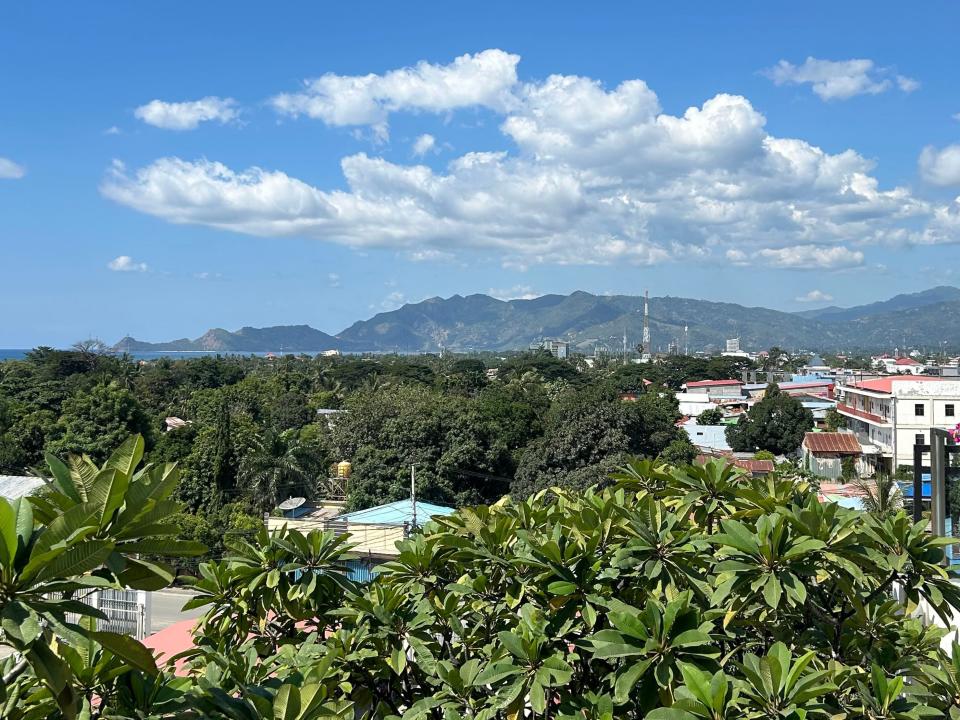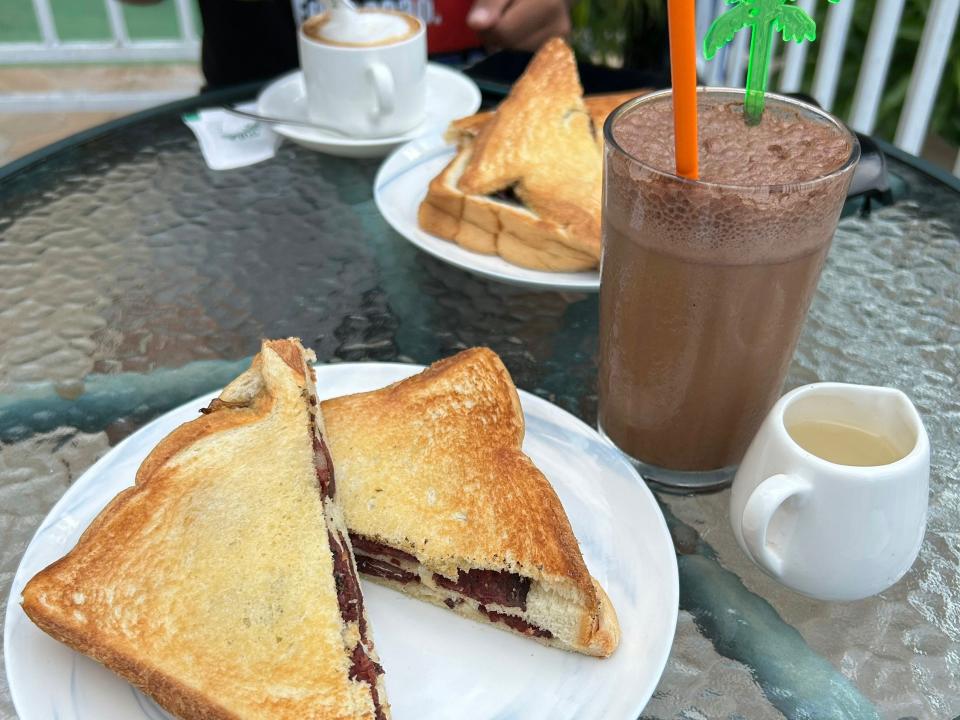I spent 3 nights in Asia's least visited country. It also turned out to be the most expensive.
Marielle Descalsota has spent over $30,000 on travel in the last two years.
Timor-Leste is one of the most expensive countries she's traveled to.
Here, she breaks down how much she spent in Timor-Leste, including flights, hotels, dining, and more.
I graduated from college two years ago and set a goal for myself to visit at least 50 countries before I turn 30.
Even while maintaining a full-time job throughout most of my travels, I've already managed to tick 20 off the list. I've traveled to six countries in Europe and 14 across Asia.
I spent about a quarter of my salary over the past two years on travel expenses, which have added up to over $30,000. I've managed to stay on a tight budget even in upscale destinations like the Maldives — where I spent less than $1,000 on a five-day trip — and backpacked on a few dollars a day in cities like Bangkok and Kuala Lumpur.
But on a recent trip to Timor-Leste in May — a country in the South Pacific smaller in size than the state of Connecticut — I found budgeting more difficult than ever. The country comprises half of Timor Island — which it shares with Indonesia — and is known for its unspoiled waters and vibrant coral reefs.
It's one of the world's least-visited countries, making airfare and hotel rates more expensive than many countries in Asia.
Timor-Leste is on the United Nations' list of the world's least-developed countries. It's also one of the more expensive countries in the region, due to high trade costs, according to Development Asia. In addition to the centavo, which is only minted in coins, the country uses the US dollar, too — a stronger currency than what's used in nearby countries, including Indonesia and Australia.
Here's a breakdown of what I spent in Timor-Leste.

Cost of return plane tickets from Bali to Dili: $500
Getting to Timor-Leste isn't easy. When I was traveling, Bali, Indonesia, and Darwin, Australia, were the only cities with flights to Dili, the capital, where the country's only international airport is located. Only two airlines — the Indonesian low-cost carrier Citilink and the local airline Aero Dili — fly between Bali and Dili. The flight from Bali is less than two hours long — while there are no direct flights from the US to Bali, stopovers through bigger airports like Singapore and Tokyo are often used.
I booked a return ticket with Citilink about three weeks before departure for $500 — which was around $100 cheaper than Aero Dili. This included a front-row seat reservation and a 44-lb checked bag allowance.

Cost of hotel stay for three nights: $500
Timor-Leste only has a handful of three-star hotels and no luxury accommodations. While Hilton plans to open a hotel in Dili's business district later this year, there were no international hotel chains when I visited.
Many travelers stay in guesthouses by the beach, which only have basic amenities such as fans and mosquito nets. I booked an entry-level room for three nights at Timor Plaza Hotel & Apartments for around $500, including tax.
While the room itself was basic — and had its fair share of critters — the hotel had a stunning view of Atauro, one of Timor Leste's two offshore islands. It was also located above a small mall, which made eating out easy.

Cost of transportation: $90
Ride-hailing services weren't available in Timor-Leste, and taxi services are limited to the city center. I was quoted $20 per hour to rent a car, and I wasn't willing to pay $200 for a day.
Fortunately, I met a local guide who charged $30 per day to tour me around Dili on a scooter. I found it an inexpensive and efficient way to travel from the gorgeous white-sand beaches to the beautiful tropical mountains.

Cost of food: $180
Food in Dili is surprisingly international. Despite only a handful of international food chains — including Burger King and Gloria Jean's Coffee — operating in Timor Leste, Western food like burgers are ubiquitous. I ate mostly local Timorese food and Indonesian fare.
I had set a daily budget of around $60 for meals, drinks, and snacks for my guide and me. While a plate of nasi goreng — Indonesian fried rice — costs around $3 to $4 in Bali, I paid around $15 for the dish in Dili. At a local café, I paid $8 for a small plate of jackfruit, carrots, lettuce, and tortillas.

Miscellaneous costs: $415
Before my trip, I spent $15 on an eSIM and $20 on travel insurance. When I arrived in Timor-Leste, I had to pay $30 for the visa-on-arrival, which allowed me to stay in the country for 30 days.
Souvenirs in Timor-Leste are expensive. I purchased a small handmade bag and sarong from the local Tais market — a type of weave indigenous to the country — for around $70. I snagged a handmade belt at another shop for $30. I bought several bags of Timorese coffee — the country's second-biggest export — for $50.
I didn't expect to find Western makeup products in Timor-Leste, so I bought a few items when I did find them at a local grocery for $70, although at a substantial markup compared to what they cost on retailers like Amazon.
I didn't spend much on sightseeing as most of my time was spent swimming at the beach and exploring the tropical mountains. For activities, I spent $30 on a massage at a traditional Chinese spa and $50 on a half-day scuba diving trip at the coast. I budgeted about $50 for tips.
While traveling to Timor-Leste was expensive, the stunning views were worth it. I'd do it again in a heartbeat.
Read the original article on Business Insider

